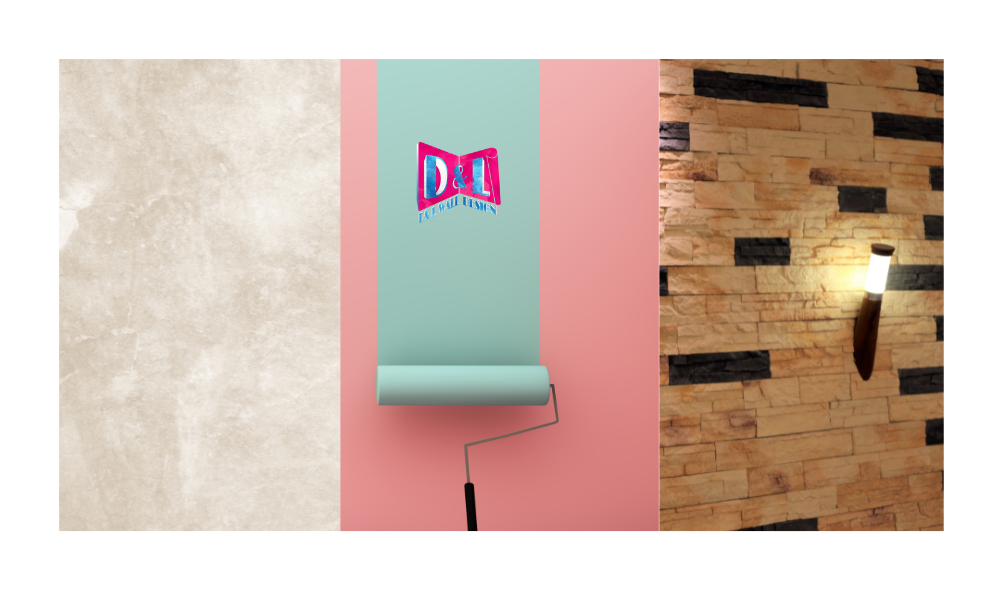Introduction To Wall Coverings
Wall coverings play a significant role in interior design, offering both aesthetic appeal and functional benefits to any space. As an essential element of home and commercial decor, wall coverings can transform an environment, setting the tone and mood by adding texture, color, and pattern to walls. Wall covering types range from traditional wallpapers and paint to more contemporary materials like vinyl, fabric, and even wood or stone veneers.
Each type of wall covering brings its unique characteristics, influencing the overall ambiance of a room.
Wall coverings provide more than just visual enhancements; they offer practical advantages as well. They can protect walls from wear and tear, conceal imperfections, and even improve acoustics or thermal insulation within a space. Additionally, with advancements in technology and manufacturing, many wall coverings are now designed to be more durable, easy to maintain, and environmentally friendly, broadening their appeal to a wider audience.
When it comes to selecting the best wall covering, it is important to consider not only the aesthetic qualities but also the specific needs of the space. Factors like durability, ease of cleaning, installation requirements, and the existing interior style must be taken into account. Whether looking for something bold and eye-catching or subtle and understated, the right wall covering can enhance the space, reflecting personal taste and fulfilling practical requirements.
Understanding Different Types Of Wall Coverings
When considering the best wall covering for a space, it’s important to understand the variety of options available, each bringing unique aesthetics and functionality. Paint remains a popular choice due to its versatility and ease of application, allowing for quick refreshes in color or finish. It’s an economical option appropriate for both subtle backdrops and bold statements. Wallpaper, on the other hand, offers an array of patterns, textures, and colors, adding depth and character to a room.
Recent innovations such as peel-and-stick varieties have made wallpaper easier to apply and remove, catering to renters or those seeking minimal commitment. For those desiring a more luxurious finish, fabric wall coverings provide a tactile element, adding warmth and dimension while also offering sound-absorbing qualities. Alternatively, wood paneling introduces an element of nature and warmth, available in many styles from rustic barn planks to sleek modern slats, providing a timeless appeal.
Tile as a wall covering is valued for its durability and moisture resistance, ideal for kitchens and bathrooms. It’s easy to clean and available in a myriad of styles, from classic ceramics to intricate mosaics. Selecting the right wall covering requires balancing aesthetic preferences with practical considerations, ensuring the choice complements both the intended ambiance and functional needs of the space.
Factors To Consider When Choosing A Wall Covering
When selecting a wall covering, several important factors should be considered to ensure that the chosen option enhances the aesthetic appeal and functionality of your space. Firstly, consider the room’s purpose and traffic level. High-traffic areas like hallways or kitchens might benefit from durable, washable materials such as vinyl or treated fabric, which can withstand frequent cleaning and occasional scuffs. In contrast, a formal dining room might lend itself to luxurious options like silk or textured grasscloth that offer elegance but require more delicate maintenance.
Next, take into account the existing or desired style and color scheme of the room. Wall coverings should complement furniture, flooring, and other decor elements to create a cohesive look. Additionally, lighting plays a crucial role, as natural and artificial light will interact differently with various textures and patterns. A dark wallpaper might add drama and intimacy to a well-lit room, while lighter colors can make a smaller space feel larger and more open.
Moisture levels in the room also influence material choice; bathrooms and kitchens may need moisture-resistant options to prevent damage and mold growth. Finally, budget is often a determining factor, as wall coverings range widely in cost from economical paint to premium designer wallpapers. Balancing aesthetic desires with practical considerations will guide you to the ideal wall covering for any space.
Pros And Cons Of Popular Wall Covering Options
When it comes to choosing wall coverings, understanding the pros and cons of each option is essential for making an informed decision. Paint is one of the most popular choices due to its versatility and affordability. It offers a wide range of colors and finishes, making it easy to update a space. However, paint can be prone to chipping and requires regular maintenance, like touch-ups, to look fresh.
Wallpaper, on the other hand, offers an array of patterns and textures that can add a unique flair to any room. It’s more durable than paint and can last many years without fading, but it can be challenging to remove or replace once it’s applied, making it less ideal for those who like to frequently change their decor.
Paneling offers a classic and sophisticated look, often made from materials like wood or MDF, and can provide insulation. It’s durable and can add warmth to a space, but it can be more costly and might not suit modern or minimalist styles. Tiles are another durable option, particularly in wet areas like bathrooms and kitchens, offering water resistance and easy cleaning. However, they can be cold to the touch and require professional installation.
Fabric wall coverings bring luxury and texture, absorbing sound and adding a cozy atmosphere, but they can be prone to stains and require special cleaning. Each wall covering option carries its own unique benefits and drawbacks, making the choice highly dependent on personal preferences and the specific needs of a space.
How To Match Wall Coverings With Your Interior Design Style
When selecting wall coverings, it’s essential to match them with your interior design style to create a cohesive and harmonious atmosphere. Start by considering the overall aesthetic you wish to achieve in your space. For a minimalist style, opt for neutral tones and subtle textures, as these can complement the simplicity and understated elegance that defines minimalism. A Scandinavian interior would benefit from light-colored, natural materials that reflect the region’s affinity for simplicity and functionality.
If your style leans towards the rustic or farmhouse look, consider using materials like reclaimed wood panels or wallpaper with a distressed finish to enhance the charm and warmth associated with these styles. An industrial space typically favors raw textures such as exposed brick or concrete, both of which can be emulated with wall coverings. For a more traditional or classic interior, consider using wallpaper with intricate patterns, such as damask or floral motifs, which can add elegance and timeless appeal.
Meanwhile, contemporary styles might favor bold patterns or geometric designs to create a striking impression. Don’t overlook the color palette—ensuring your wall coverings complement your existing furnishings and decor is key to maintaining visual harmony. Ultimately, the right wall covering should enhance, not overshadow, your interior design, contributing to the overall mood and style of your home.
Tips For Installation And Maintenance Of Wall Coverings
When it comes to ensuring a long-lasting and visually appealing wall covering, proper installation and maintenance are imperative. Before installation, it is crucial to thoroughly clean and prepare the wall surface, removing any dirt, dust, or existing wall coverings. Uneven surfaces should be filled and smoothed to guarantee that the new covering adheres correctly and looks seamless. Using a quality adhesive suited for the specific type of wall covering—be it wallpaper, fabric, or alternatives like vinyl—is essential for durability and appearance.
Measure and cut the materials precisely to avoid waste and ensure uniform patterns, which will make the finished product look professional.
During installation, work methodically from top to bottom, taking care to remove any air bubbles with a smoothing tool or soft cloth as you go. Taking your time and being attentive to detail will pay off in the long run. For maintenance, regular dusting and gentle cleaning are recommended to preserve the quality and appearance of the wall coverings. Avoid harsh chemicals or scrubbing actions that can damage the materials.
Occasionally, inspect the coverings for signs of wear or peeling, especially in areas with high humidity or traffic, and address these issues promptly to maintain an immaculate look. By following these guidelines, your wall coverings can remain vibrant and intact for years.
For the best, hassle-free wall covering, wallpaper removal, and installation, hire a reliable wallpaper contractor in Miami, such as D&L Wall Design, to help you create a stunning space. Contact D&L Wall Design at 786 389-3914 for a FREE consultation today!

